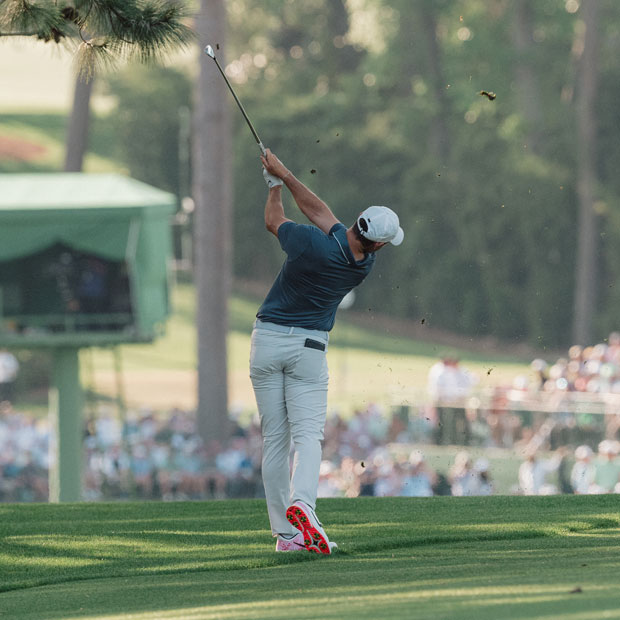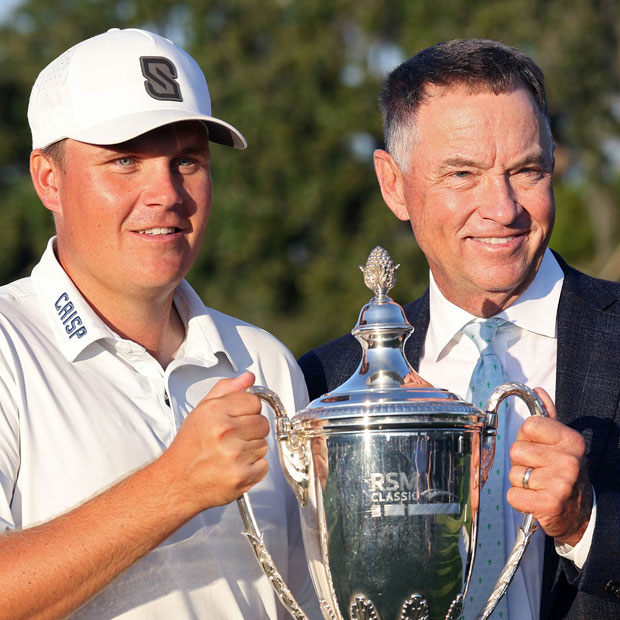Are Bryson’s Bespoke Irons a Sign of Things to Come for Equipment Testing?
Bryson DeChambeau debuted a $10,000 set of irons at Augusta that were only approved that week by the USGA. So, what should we think about that?


In the days leading up to the 2024 Masters, the golf world learned that one of the game’s most exotic minds had cooked up his latest great idea. Approved by the USGA on Monday of tournament week, Bryson DeChambeau put into play a set of irons with bulge-and-roll faces, the same technology that helps correct off-center hits in drivers and metal woods. The irons were produced by manufacturer Avoda via 3D printer, cost $10,000, and were the only set in existence. Those clubs helped Bryson finish T-6 at Augusta and runner-up at Valhalla, and he’ll roll into Pinehurst No. 2 looking for his second U.S. Open title.
The vast majority of viewers probably never knew about or even registered that Bryson’s equipment was any different that week at Augusta National. But many of us who did had questions. I may have even called the whole situation “crazy.” It all seemed just so fantastical. How could a brand new set of irons get spun up and approved for competition if no one else in the world uses them or even has access to them? Is that really how golf compliance rules should function?
◊
After Bryson’s irons saw the light of day, the equipment industry was abuzz with intrigue. “The general consensus was, ‘How does this work?’” Golf.com’s Ryan Barath told Fried Egg Golf. Bulge-and-roll has been primarily used in clubs where the center of gravity is further away from the face, i.e. drivers, fairway woods, and hybrids. It has been tested in irons before but was not widely adopted, because the curvature means different lofts at different spots on the face and there weren’t any noticeable performance benefits. “Is someone innovating for the sake of innovating, or are they actually creating something that is new and beneficial?” Barath questioned.
My concerns — not necessarily with Bryson’s situation but with the process in general — stemmed from the thought that if a club can be waved through the week of competition and have a legitimate impact, you’d have to wonder if there was a competitive advantage for the one player with it in their bag. So I asked the USGA, specifically Carter Rich, Head of Equipment Standards, if he believed that could be an issue at any point. “Anybody at that level at least would have the capability of doing the same thing and making that club,” Rich replied. “So no, no concerns for that.”
Rich has spent over 20 years working with technology and equipment in various capacities for golf’s governing body. In order for a golf club to be approved for play, it needs to go through inspection and testing completed by Carter and his team. “Of the 20-some people that we have currently, you could be in the neighborhood of 18, 19 [involved in the approval process],” Rich told me. “Basically the whole department’s taking a look at everything that comes through.” That process takes on average about 30 days, although it can be expedited for special circumstances, like when you need a review the week of the Masters. They also perform testing on site at PGA Tour events and when a player or manufacturer needs something looked at before it is put into use. Those clubs appear on the conforming list, which is publicly available and updated every Monday, meaning the whole world can see what is and what is not legal for use on a weekly basis.
The process of club approval is a blind spot to most who play golf, which is probably how it should be since it doesn’t affect the way they interact with the sport. But when it comes to technology used at the highest levels of the game, that process and its timing is incredibly important. Professionals and their manufacturers need to know what is cleared for competition and what is not, and that process is only going to get more complicated as bespoke equipment becomes more available at the highest levels. “This technology is only getting better,” Ryan Barath said of 3D printing. “It’s only getting faster. And it’s going to allow for more of this customization to players…That truly is the Pandora’s box of what will be next when it comes to golf equipment and custom fitting.”
◊
It’s comforting to know that the USGA has a handle on testing and compliance. The fact that they can analyze, process, and approve clubs that aren’t widely available is undoubtedly a good thing for innovation. In fact, Rich thinks it’s integral to the game of golf itself. “To me, the spirit of the game is to let players have that variety and find what works best for them,” he said. The USGA has their set equipment parameters. As long as the submitted club fits their criteria, no matter how hyper-specifically tailored to one individual it might be, it is cleared for play.
But as we move into the future of golf technology, there are new frontiers that golfers, manufacturers, and the USGA will have to tackle as it relates to specific launch conditions of these individually focused clubs. As 3D printing becomes more commonplace and technology improves, will we see clubs that are so wildly optimized for one player that it’s more difficult to judge if an unfair performance benefit exists? As swing speeds continue to increase, will we run into limitations when testing the effects of different technologies at the highest end of the speed spectrum? These questions are hypotheticals for now. The USGA’s testing parameters and criteria are locked in, and all clubs have to meet those standards in order to be cleared for use. Engineers are always going to keep innovating, and the early signs — like those shown in DeChambeau’s unique set — are that those innovations will only make the process more complex.
For more coverage of the U.S. Open, visit the Fried Egg Golf U.S. Open hub here.
Leave a comment or start a discussion
Engage in our content with thousands of other Fried Egg Golf Club Members
Engage in our content with thousands of other Fried Egg Golf Members
Get full access to exclusive benefits from Fried Egg Golf
- Member-only content
- Community discussions forums
- Member-only experiences and early access to events











Leave a comment or start a discussion
Lorem ipsum dolor sit amet, consectetur adipiscing elit. Suspendisse varius enim in eros elementum tristique. Duis cursus, mi quis viverra ornare, eros dolor interdum nulla, ut commodo diam libero vitae erat. Aenean faucibus nibh et justo cursus id rutrum lorem imperdiet. Nunc ut sem vitae risus tristique posuere. uis cursus, mi quis viverra ornare, eros dolor interdum nulla, ut commodo diam libero vitae erat. Aenean faucibus nibh et justo cursus id rutrum lorem imperdiet. Nunc ut sem vitae risus tristique posuere.